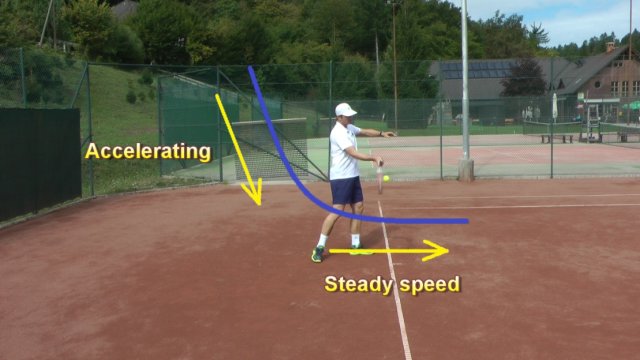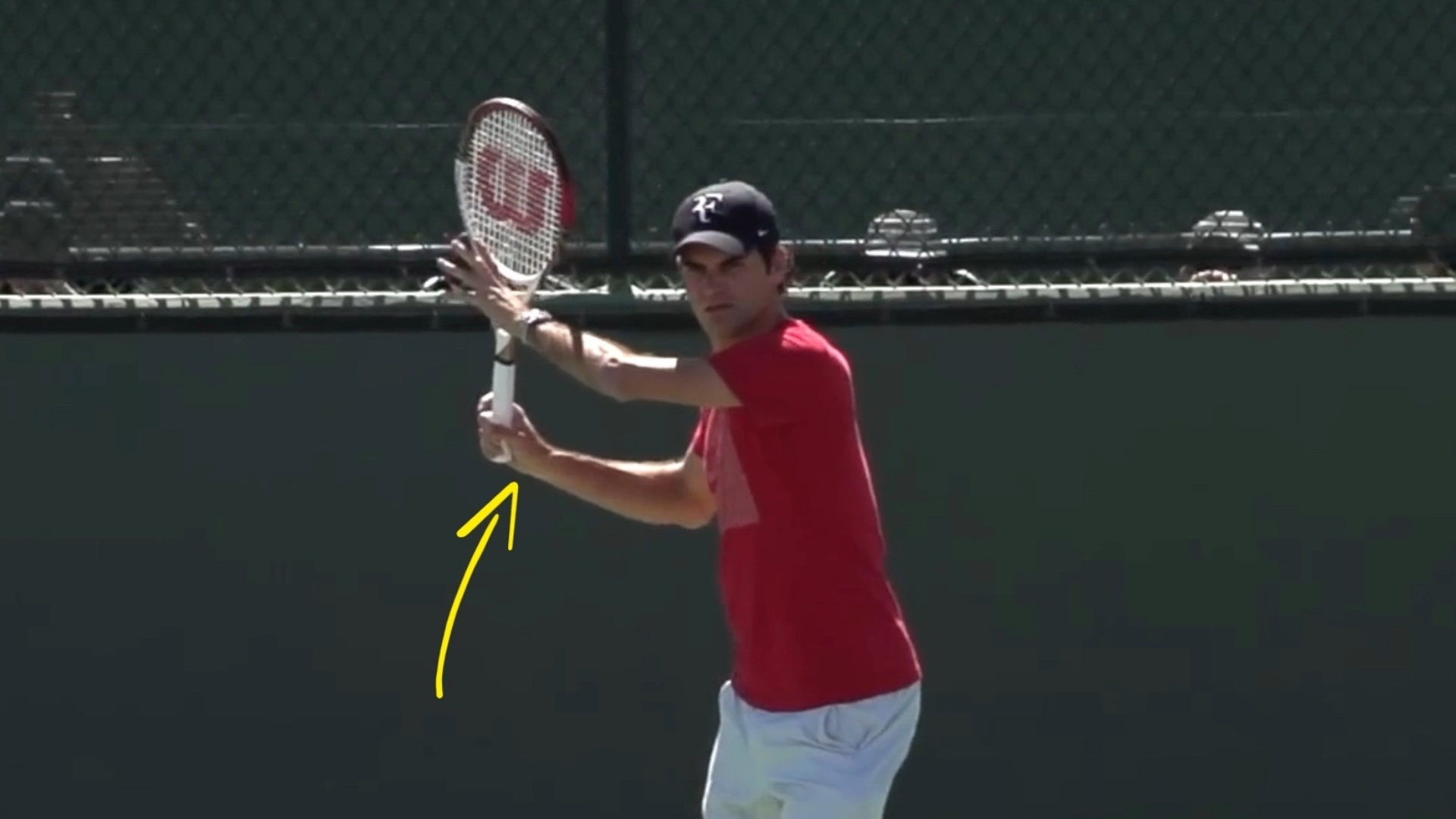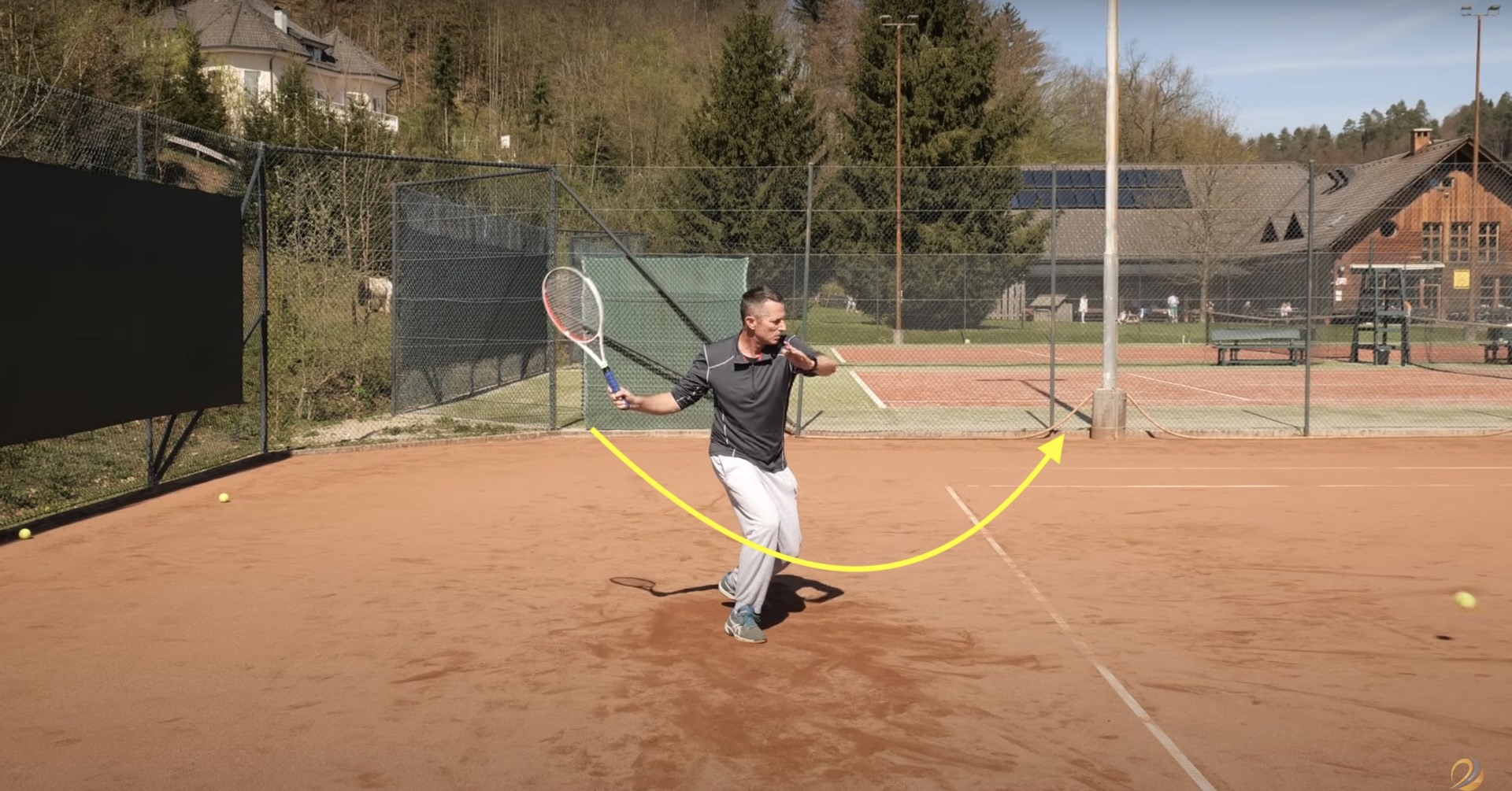If you’re struggling to hit the ball cleanly and play with good consistency even in a free hitting tennis sessions with your friend, you may be doing one common mistake.
You could be accelerating the racket too late and too abruptly.
That late and sudden acceleration causes you to tense up and likely pull the racket slightly away from the ball, which results in a poor shot since you didn’t hit the ball in the sweet spot.
So, the cause of your mistake may not be incorrect stroke technique but an incorrect way of accelerating the racket.
Typical Playing Situations In Tennis
When we play tennis matches, we find ourselves in 3 different situations: defense, neutral rally and attack.
A defensive situation is often an emergency situation, and we may need to do whatever is necessary to get back in play.
A neutral rally situation is when both players are behind the baseline and cover the court well. In these situations, it’s not sensible to hit attacking fast shots as they are too risky.
Therefore, we hit more steady, controlled shots and try to move the opponent around, play to their weaker side or simply keep the ball in play.
The third situation is when we have a short ball and want to accelerate our strokes to put more pressure on the opponent, force a mistake or hit a winner.
I have already explained how to accelerate the racket when you want to attack a short ball and possibly put it away.
Click on the link or the image above to learn more about it, but in short, I talked about gradual acceleration that reaches its peak by the time we hit the ball.
But, there is also a different type of acceleration which we use in neutral ball exchanges, sometimes even in defensive situations.
We are then not looking to hit the fastest shot possible. Instead, we want more control over the ball.
We also use that type of acceleration in free hitting sessions with friends where we simply want to groove our strokes or perhaps work on something like practicing depth, direction, spin or other elements of tennis like hitting the ball in front, watching the ball, exhaling at contact, training certain stances and so on.
This type of acceleration is best explained with a roller coaster mental image.
A Roller Coaster Ride
Imagine a roller coaster starting on the top of a steep slope that eventually levels out into a horizontal plane.
If a roller coaster is released down the slope, it will be continually accelerating as long there is a downward direction so it keeps picking up speed.
But, once the roller coaster reaches the horizontal area/plane, it will not accelerate anymore.
In fact, it will gradually slow down, though it will seem to keep a steady speed for a short distance.

This simple mental image can guide your forehand and backhand acceleration
This is how you can imagine accelerating your strokes in neutral ball exchanges or in practice sessions where maximum speed of the shots is not the main goal.
Imagine accelerating in the first part of the stroke where the racket is going downward and then holding a steady speed when you are getting more level with the ball and you’re swinging forward or slightly upward.
If you do take a leap of faith and really apply this principle, you will realize that you have more than enough power to play the ball deep on the other side of the net.
Your racket has gained more than enough momentum to overcome the ball’s resistance and change its direction without you needing to apply extra force by muscling the ball and tightening up.
The reason I mention a leap of faith is that players tend to accelerate so late and so abruptly because they believe a lot of force is needed to make the ball fly across the net.
It isn’t!
You mostly need to get the racket going with some moderate speed, and it will ALWAYS beat the ball once they collide. That’s because a tennis ball is very light; it weighs around 60 grams.
That is nothing compared to the combined weight of your arm and racket (not to mention the body if you know how to engage it properly) swinging towards the ball.
The ball will bounce off the racket effortlessly as the momentum of your body + arm + racket is way bigger than the momentum of a 60 gram ball coming towards you.
No extra force required.
(I highly recommend that you also try the Minimum Effort Drill which I explained in the past. It guides you in the same direction of not accelerating all the time towards the ball.)
And through this mental image of a roller coaster, you may experience that for the first time if you stop accelerating the racket once you’re getting closer to the ball and simply hold a steady speed which you’ve generated in the first part of the forward swing.

So, give this simple idea a try and see how it works for you.
It’s best applied in a free hitting session with your friend or when you’re warming up and you just want to groove in your strokes, get your timing right and find the sweet spot.






Hello Tomaz.
Thank you a lot for your very very useful advices and your pedagogical skills.
One question relative to the weight of a racket. For a player ranking 3.5 do you recommend a light racket around 10 oz?
And in general do you recommend light or heavy racket?
thanks a lot
Nicolas
Thanks, Nicolas!
I recommend a racket of around 300 grams for an adult male or let’s say minimum 285 grams to maximum 310 grams which corresponds to 10-11 oz.
Tennis brands make light rackets because they still allow you to play ok with poor technique. 😉
Heavier rackets make it difficult to play with poor technique and therefore “force” you to learn correct technique that is based on swings and other biomechanical principles.
But if one of course has no time to work on technique and you only play points with friends or doubles, then your technique has no chance to improve and it’s better to stick to a lighter racket.
Lighter rackets produces some injuries, in general these sticks are very rigid. Heavier rackets are more flexibles, but its true, you need more technique.
Thanks for the advice an very good analogy to show clearly the technique.
Regards.
Hi Tomaz,
I think this problem really has to do with the entire attitude people have when they step onto a tennis court.
Many people seem to feel the need to be doing something special or complicated when they are hitting. They have an idea about what high level players do when they hit, and they are trying to reproduce that in a vague sort of way without having a clear intention for what they’re doing. Often they just want to hit harder and/or with more topspin because that’s what “good” players do.
Also, they don’t give any thought to what kind of ball they’re sending to their practice partner or what kind of ball it would make sense for their practice partner to receive at a particular moment.
You talk about looking for control and not speed in neutral rallies, and also grooving strokes and working on a range of different things in practice sessions. Unfortunately, at the recreational level these ideas are pretty foreign to most people’s way of thinking.
Even among the higher level players at my local public courts I rarely ever see anyone rallying like at the beginning of this video:
https://www.youtube.com/watch?v=OYTa8pZ7voY
Thanks for sharing the link, Zac, that’s exactly how tennis sessions needs to start.
I agree, most players hit the ball with their ego instead of the feel.
I try to do my part with sharing the knowledge on how tennis is really played and that if someone wants to get good at it they need to practice and not just play points.
Wishing you good luck in finding partners who are willing to try to master the game of tennis instead of attempting blow their (fragile) ego by winning a match against a fellow recreational tennis player.
Hi Tomaz,
l wonder that this acceleration technique is applicable in playing doubles…
best regards,
Cam
Hi Cam,
This acceleration technique needs to practiced in free hitting sessions so that your brain stores a new program on how to swing the racket.
Once that happens, you brain will subconsciously choose the type of acceleration needed in a game depending on the situation.
“You” should not make ANY conscious choice on how to accelerate the racket when you play a competitive game in the same way as you don’t consciously choose whether you’ll play an open or a closed stance.
So I just want to make sure that you don’t actually think how to accelerate your racket while you play doubles. It will mess you up completely.
You cannot think and play!
You need to AUTOMATE (ingrain) certain movements or ways of accelerations in practice sessions and then your brain will choose what’s needed in each situation.
Hi Tomaz,
What about the forearm pronation and the “slap” on the forehand? Do they participate on the racquet acceleration somehow?
Regards
Diego
Hi Diego,
The “pronation” you may see in slow motion videos happens after the contact and in my opinion should not be taught.
This is simply a movement that develops after years of training and it develops unconsciously when the player is so relaxed and has such good timing that they “throw” the racket into the ball very freely.
That’s where the “slap” also comes from.
So all these elements come from years of training tennis and having such freedom of swing that the player really lets go of the racket head and makes it fly through the air into the ball.
All this may develop for you if you just think about throwing the racket into the ball and see how much you can control the shot.
I wrote about this before:
https://www.feeltennis.net/power-and-control/